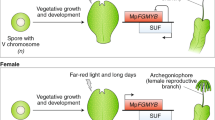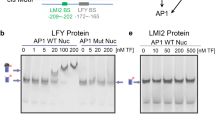Abstract
WE feel obliged to comment on Godwin's1 criticism of our recent article2 on exine formation and the role of the tapetum in Tradescantia bracteata, and we take his points in order. We reiterate our claim that the bulk of the exine develops at an early stage in our plant. At the time of dissolution of the tetrad the ektexine appears to be fully developed, the baculae have attained maximum height and both apertural and non-apertural regions are differentiated (Fig. 1). Furthermore, the endexine is thicker at this stage than at maturity by which time it has stretched and may have become discontinuous. Our observation of the early development of exine within the tetrad should not be difficult to reconcile with observations made by other workers on other plants3–7. We can see no a priori reason why it should be assumed that the timing of exine development is identical in all plants. Godwin seems to accept the view that the callose walls of the tetrad are impermeable to exine precursors, and states8, in referring to “primexine” within the callose wall: “There seems no reason to suppose that even at this stage the exine elements are not made of sporopollenin although this implies that the precursors are derived at this stage from the microspore and not from the tapetum”. We are describing just such a system but with the difference that the bulk of the exine is produced in this way and not just the primexine.
This is a preview of subscription content, access via your institution
Access options
Subscribe to this journal
Receive 51 print issues and online access
$199.00 per year
only $3.90 per issue
Buy this article
- Purchase on Springer Link
- Instant access to full article PDF
Prices may be subject to local taxes which are calculated during checkout
Similar content being viewed by others
References
Godwin, H., Nature, 220, 389 (1968).
Mepham, R. H., and, Lane, G. R., Nature, 219, 961 (1968).
Heslop-Harrison, J., Grana Palynol., 4, 7 (1963).
Echlin, P., Chapman, B., Godwin, H., and Angold, R., Proc. Sixth Intern. Cong. Electron. Micros., Kyoto, 2, 315 (1966).
Echlin, P., and Godwin, H., J. Cell Sci., 3, 161 (1968).
Echlin, P., and Godwin, H., J. Cell Sci., 3, 175 (1968).
Angold, R. E., Rev. Palaeobot. Palynol., 3, 181 (1967).
Godwin, H., New Phytol., 67, 667 (1968).
Dunbar, A., Grana Palynol., 7, 10 (1967).
Author information
Authors and Affiliations
Rights and permissions
About this article
Cite this article
MEPHAM, R., LANE, G. Role of the Tapetum in the Development of Tradescantia Pollen. Nature 221, 282–284 (1969). https://doi.org/10.1038/221282a0
Received:
Revised:
Issue Date:
DOI: https://doi.org/10.1038/221282a0
This article is cited by
-
Anther wall and pollen development in Neotropical species-rich Miconia (Melastomataceae)
Plant Systematics and Evolution (2015)
-
A comparison of tapetal structure and function in pteridophytes and angiosperms
Plant Systematics and Evolution (1995)
-
An ultrastructural, cytochemical and immunofluorescence study of postmeiotic development of plasmodial tapetum inTradescantia virginiana L. and its relevance to the pathway of sporopollenin secretion
Protoplasma (1986)
-
Comparative morphology of monocot pollen and evolutionary trends of apertures and wall structures
The Botanical Review (1983)
-
Tapetum plastids ofOlea europaea L.
Protoplasma (1981)
Comments
By submitting a comment you agree to abide by our Terms and Community Guidelines. If you find something abusive or that does not comply with our terms or guidelines please flag it as inappropriate.



